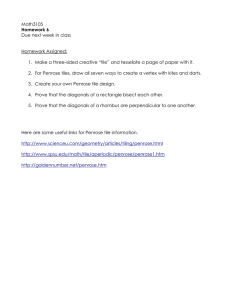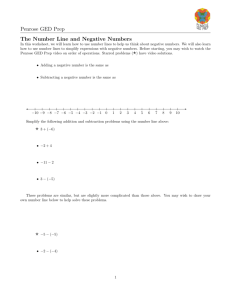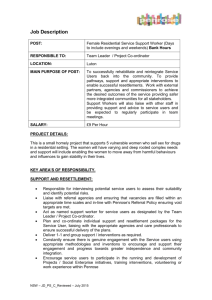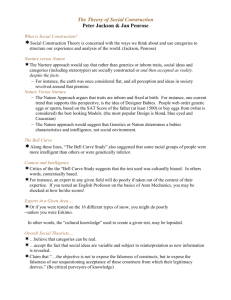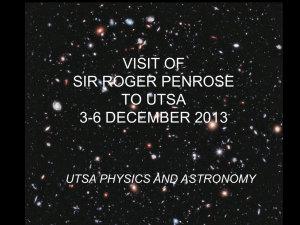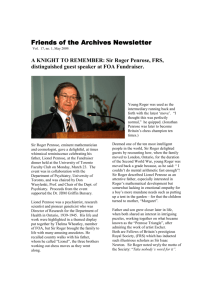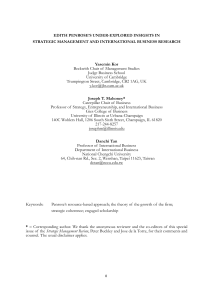Chapter 5(1)
advertisement
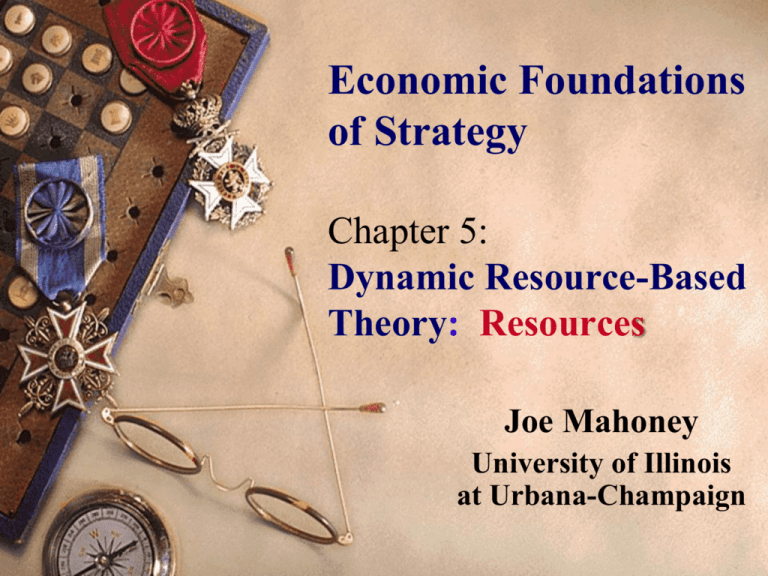
Economic Foundations of Strategy Chapter 5: Dynamic Resource-Based Theory: Resources Joe Mahoney University of Illinois at Urbana-Champaign Resource-Based Theory & Dynamic Capabilities Penrose (1959): The Theory of the Growth of the Firm Chandler (1990): Scale and Scope: The Dynamics of Capitalism Penrose (1959): The Theory of the Growth of the Firm Penrose (1959) is concerned with the growth of firms and only incidentally with their size. The focus is on an internal process of development leading to cumulative movements of the firm in a particular direction. The emphasis is on the internal resources of a firm --on the productive services available to a firm from its own resources, particularly the productive services available from management with experience within the firm. Penrose (1959): The Theory of the Growth of the Firm Experience of management will affect the productive services that all its other resources are capable of rendering. As management tries to make the best use of the resources available, a truly “dynamic” interacting process occurs which encourages continuous growth but limits the rate of growth. The environment is treated as an “image” in the entrepreneur’s mind. Penrose (1959): The Theory of the Growth of the Firm A firm is more than an administrative unit; a firm is also a collection of productive resources where the choice of different resources uses is made by managerial decision. Subjective productive opportunity set of the firm is determined by the resources and experiences of the management team and this perceived opportunity set is unique for each firm. Penrose (1959): The Theory of the Growth of the Firm Strictly speaking, it is never resources themselves that are the “inputs” in the production process, but only the services that the resources can render. The capacities of the existing managerial personnel of the firm necessarily set a limit to the expansion of that firm in any given period of time, for it is self-evident that such management cannot be hired in the marketplace. Penrose (1959): The Theory of the Growth of the Firm An administrative group is something more than a collection of individuals; it is a collection of individuals who have experience in working together, for only in this way can “teamwork” develop. Experience that these managers gain from working within the firm and with each other enables them to provide services that are uniquely valuable for the operations of the particular group with which they are associated. Penrose (1959): The Theory of the Growth of the Firm Existing management limit the amount of new management that can be hired (after all the services of existing management are required even to greet, let alone to install and instruct, the new personnel). Individuals cannot be hired from outside the group, and it takes time to achieve the requisite experience. Penrose (1959): The Theory of the Growth of the Firm If a firm deliberately or inadvertently expands its organization more rapidly than the individuals in the expanding organization can obtain the experience with each other and with the firm that is necessary for the effective operation of the group, the efficiency of the firm will suffer. Since the services from the “inherited” managerial resources control the amount of new managerial resources that can be absorbed, they create a fundamental and inescapable limit to the amount of expansion a firm can undertake at any time. Penrose (1959): The Theory of the Growth of the Firm “The Penrose Effect” • The amount of activity that can be planned at a given time limits the amount of new personnel that can be profitably absorbed in the “next period.” • Though learning, managerial services absorbed in the planning processes will be gradually released and become available for future projects. Penrose (1959): The Theory of the Growth of the Firm Through experience comes excess capacity in firmspecific knowledge and resources that are subject to market frictions. Therefore, the firm seeks to expand in directions that will allow the utilization of these excess resources. Management is then confronted with a “jig saw puzzle” of how to utilize these resources. The limits to the rate of the growth of the firm are due to the “The Penrose Effect” where the current supply of managers with firm-specific knowledge cannot be spread too thin; otherwise inefficiencies will result (i.e., there are dynamic adjustment costs). Penrose (1959): The Theory of the Growth of the Firm Unused productive services of resources shape the scope and direction of the search for knowledge. If resources were completely non-specific, a firm could in principle produce anything. The selection of the relevant product-markets is necessarily determined by the “inherited” resources of the firm --- the productive services it already has. This search leads to new combinations of resources. Penrose (1959): The Theory of the Growth of the Firm The concept of “market imperfections” is an important explanation for explaining firm-level diversification. Diversification and expansion based on a high degree of competence and technical knowledge in specialized areas of manufacture are characteristic of many of the largest firms in the economy. This type of competence together with the market position it ensures is the strongest and most enduring position a firm can develop. Penrose (1959): Key Ideas Firm growth can be studied as a dynamic process of management interacting with resources. Firms are institutions by people to serve the purposes of people. Services of resources are drivers of firm-level heterogeneity. Services that material resources will yield depend on the knowledge possessed by human resources. The two together create a subjective opportunity set that is unique for each firm. Penrose (1959): Key Ideas Firm-level growth is a function of firm-specific experiences in teams. Managerial capability is the binding constraint that limits the rate of the growth of the firm --- the so-called Penrose Effect. Excess capacity of productive services of resources is a driver of firm-level growth. Unused productive services of resources can be a source of innovation. An important component of the competitive process is experimentation. Chandler (1990): Scale and Scope: The Dynamics of Capitalism In the last half of the 19th century a new form of capitalism appeared in the United States and Europe. The building of the rail and telegraph systems called for the creation of a new type of business enterprise. The massive investment required to construct those systems and the complexities of their operations brought the separation of ownership from management. The enlarged enterprises came to be operated by teams of salaried managers who had little or no equity in the firm. Chandler (1990): Scale and Scope: The Dynamics of Capitalism The new forms of transportation and communication, in turn, permitted the rise of modern mass marketing and mass production. The unprecedented increase in the volume of production and in the number of transactions led the entrepreneurs who established the new massproducing and mass-distributing enterprises – like the railroad personnel before them --- to recruit teams of salaried managers. Once modern transportation and communication systems were in place, the new institution and the new type of managerial personnel provided a central dynamic for continuous economic growth and transformation. Chandler (1990): Scale and Scope: The Dynamics of Capitalism Examines the beginnings and growth of the modern industrial enterprise in the world’s three leading industrial nations: United States, Great Britain and Germany. Maintains that as a result of the regularity, increased volume, and greater speed of the flows of goods and materials made possible by the new transportation and communication systems, new and improved processes of production developed that for the first time in economic history achieved substantial economies of scale and scope. Chandler (1990): Scale and Scope: The Dynamics of Capitalism In order to benefit from economies of scale and scope, entrepreneurs had to make three sets of inter-related investments for achieving organizational capabilities: • Investment in production facilities large enough to utilize a technology’s potential economies; • Investment in national and international marketing and distribution networks; and • Investment in managerial recruitment and training Chandler (1990): Scale and Scope: The Dynamics of Capitalism Organizational capabilities, in turn, provided an internal dynamic for the continuing growth of the enterprise. In particular, organizational capabilities stimulated its owners and managers to expand into more distant markets in their own country and then to become multinational by moving abroad. They also encouraged the firm to diversify by developing products competitive in markets other than the original one and so to become a multi-product enterprise.
